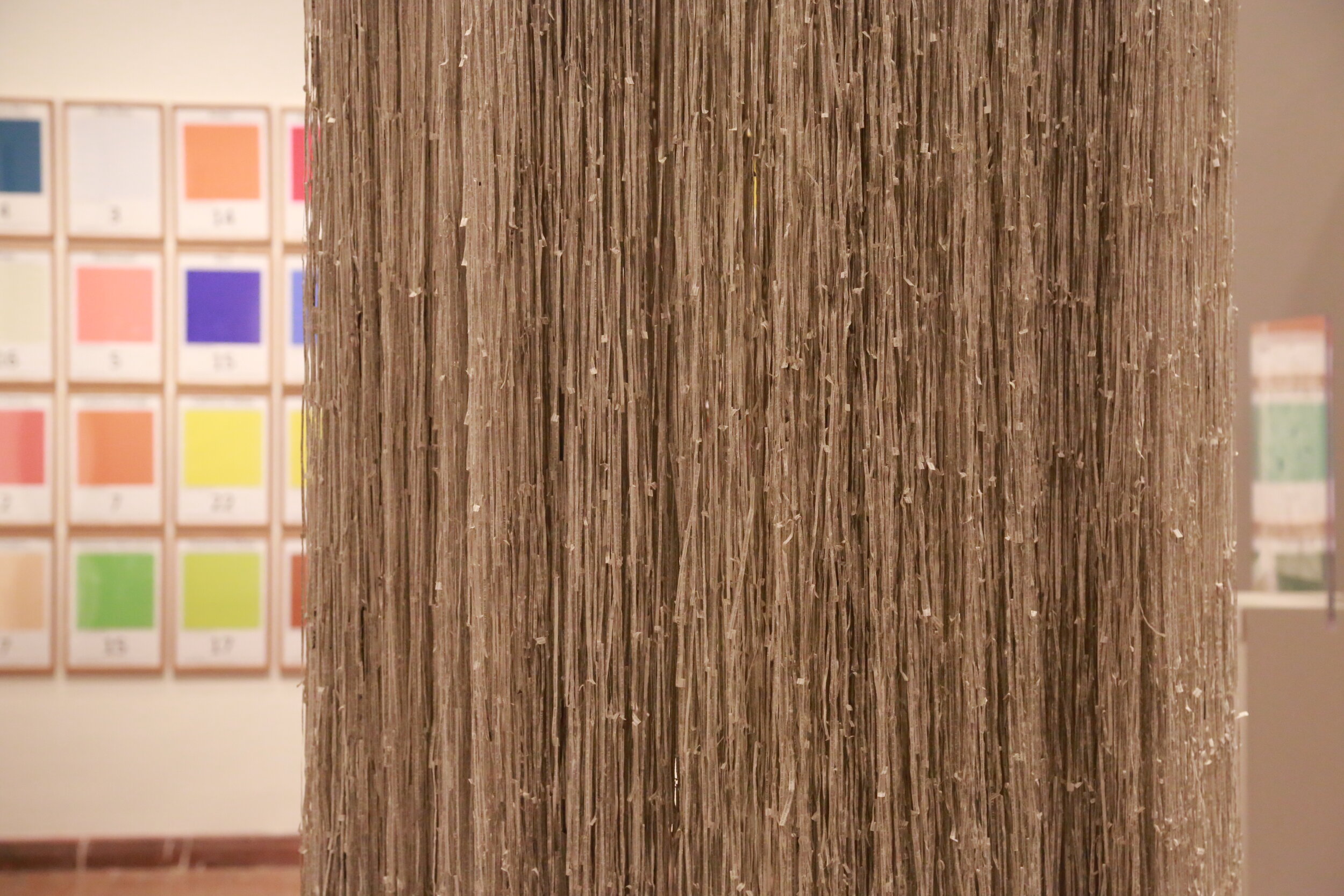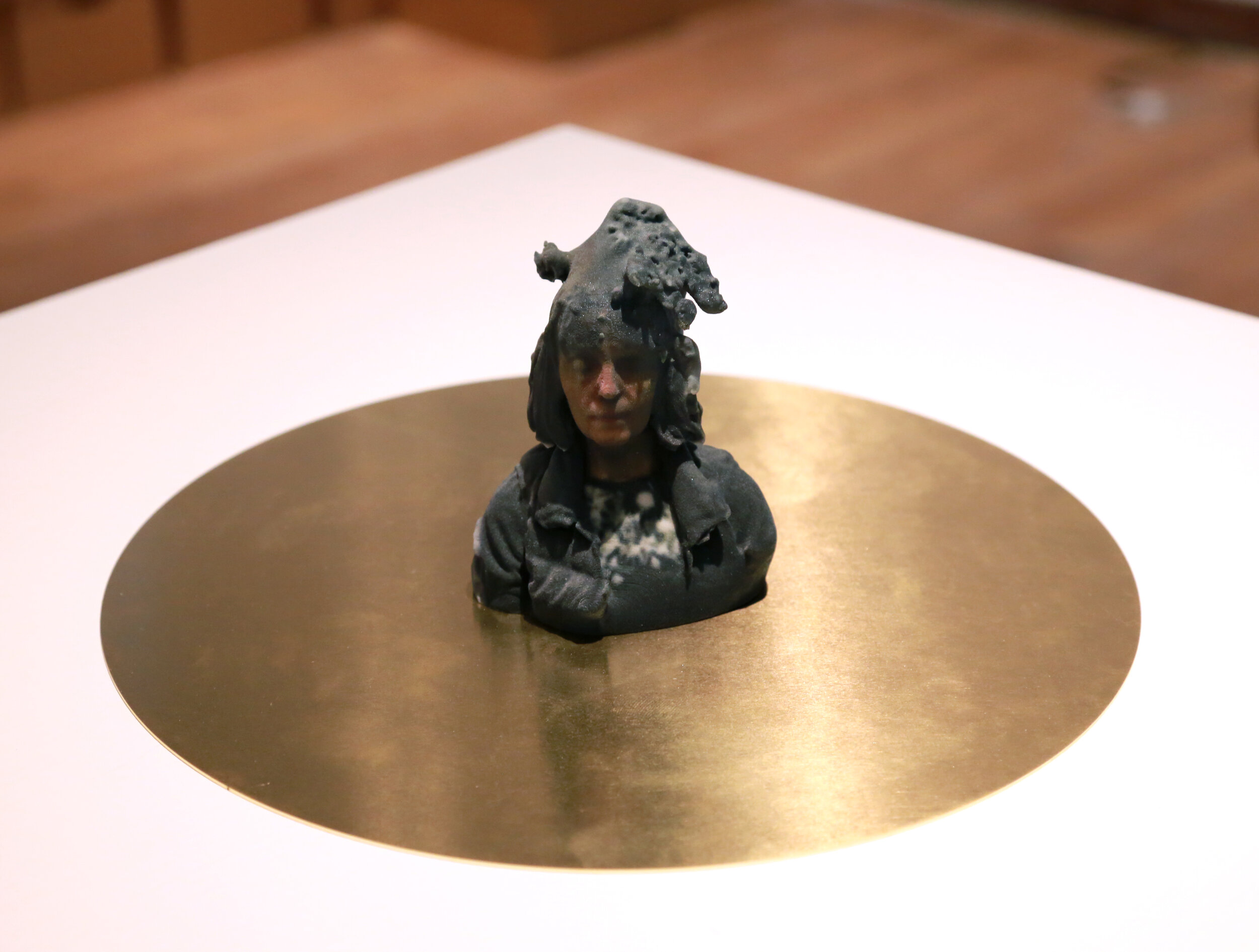Art Museum of China Academy of Art, Hangzhou, CN
18.12.2018-3.1.2019
Panel Curator: Lisa Chang Lee
Artists:
David Blandy
Jeroen van Dooren
Pauline Emond,
Nicolas K Feldmeyer
Rad Husak
Dick Jewell
Jukhee Kwon
Laura Kuch
Rachel Povey
Nicolas Rupcich
Jo Stockham
Bonnie Wong
策展文稿
雕刻和复制图像的人类行为可以回溯到3000BC苏美尔人在圆柱形石头上刻下图像和楔形文字,然后在柔软的粘土片上来回滚动,从而制作出凹凸的浮雕版。苏美尔人不但孕育了复制的概念,也奠定了后来印刷机的滚轮雏形。到后来闻名于世的最早可以确认年代的雕版版画,制作与868BC的佛教经典《金刚经》。图像性(illustrativity)与文本性(textuality),使版画区别于任何其他媒介承载着由复制动作而生的外延特质。制版和印刷的行为,象征着人类传承对世界的认知和沟通意识的渴望。而随着印刷媒介的发展,从粘土切片到现今电子时代智能便携电脑及英特网,科技发展不断更新着我们传播信息,认识世界的方式,与此同时也不断重构着人们眼中的外在世界。18世纪经验主义哲学家George Berkley在其《人类认知原理》(1710)中提出著名的“存在即是被感知”一说恰与佛教哲学中“相由心生”异曲同工,都指向世间万物/大或小的宇宙时刻因我们认知方式的改变而变化着。
新千年短短两个十年,电子技术已经让信息知识的非实体次元以几何倍数膨张扩张。2018年秋季电子巨头苹果公司发布的掌上电脑产品(iphone XsMax) 一块小小的A12芯片就可以完成每秒五万亿次运算,数字VR/AR技术也大踏步地走向便携终端,模糊着虚拟与现实的界限。知识和意识的传播随着电子信息时代的来临第一次从物质形态中解放出来,在电子光纤中肆意传递。1983年telecommunications 通过英特网实现。信息世界的平行宇宙开始形成(2003年由科学家Barret Lyon开展的Opte Project首次将英特网宽幅视觉化)人类学家Stephen Kern在其著作《爱的文化》中提到现代科技如何使人们对当下(the present moment)的意识从单线的独立事件变化为无数个相互连接的分离事件网,由此而生的当代共时关系(simultaneity)进而颠覆了传统社会人们对相遇,相爱方式等整个上层结构的重组。
此次展览《五万亿次》从三年展主题“后印刷时代”的概念延伸而来,进一步探寻和思考当代背景下变得更广义更宽泛和抽象的“印”——引申理解为“反射”和“传播”世界的手段以及从未如此多元和多维度的当代社会如何影响着个体以及群体意识。从大卫布兰迪《档案馆》用VR影像装置带我们重回数字信息时代之前的实体谷歌到影实验影像前辈迪克丘威尔的最新作品《Head2Head》用镜像的手法呈现跨越30年他同代人跨越人生的时间肖像,整个展览既而展示了一个不受传统意义版画局限的自由面貌,成为一个当代印本。
李昶
2018年9月
Context
The human behavior of engraving and copying images can be traced back to the 3000BCE Sumerian who engraved designs and cuneiform inscriptions on cylinder seals (usually made of stone), which, when rolled over soft clay tablets, left relief impressions. The Sumerians not only gave birth to the concept of reproduction, but also laid the prototype of the roller of the printing machine. Later, the earliest printed image with an authenticated date is a scroll of the Diamond Sutra (one of the discourses of the Buddha) printed by Wang Jie in 868 CE. Illustrativity and textuality distinguishes prints from any other medium that carries the extended nature of the duplication. The practice of plate making and printing symbolizes humanity's desire to pass on the cognition of the world and consciousness. With the development of printing media, from clay printing to computers and internet in today’s digital age, science and technology constantly updates the way we spread information and understand the world, on the other hand, reconstructing the world perceived in people's eyes. In words of 18th century empirical philosopher George Berkley “to be is to be perceived" in his book “An Essay toward New Theories of Vision" (1710), which in many ways coincides with the Buddhist phrase "perception turns with the soul”.
Only two decades in the new millennium, electronic technology has revolutionized the medium we use for communication, obtaining knowledge and transmission of idea. In the autumn of 2018, the electronic giant Apple released their latest handheld computer product (iphone XsMax) enabling 5 trillion operations per second with a small A12 chip. Digital VR/AR technology is also striding toward portable terminals, blurring the boundary between virtual reality and reality. The way in which knowledge and consciousness is liberated from the conventional physical mediums and is transmitted through millions of fiber bands. Meanwhile a parallel universe of the information world began to form just like the Opte Project, conducted by scientist Barrett Lyon in 2003, first visualized the Internet breadth. Anthropologist Stephen Kern mentioned in his book The Culture of Love how modern technology makes the sense of present moment changes from a single-line of independent events to an innumerable interconnected separation event network, resulting contemporary synchronicity and simultaneity subvert the entire superstructure of the our society.
Following the discussion above, ”Five Trillion Times" extends from the core concept "Post-Printing Era" of the triennial, further exploring and thinking about "print" that has become broader and broader in the contemporary context. Hence the art of “Print” in this panel is understood as the means of reflecting the world and how contemporary societies have influenced individual and group consciousness. From this point of view, the entire exhibition also presents a free face that is not limited by it’s traditional form.
Lisa Chang Lee
9.2018



























